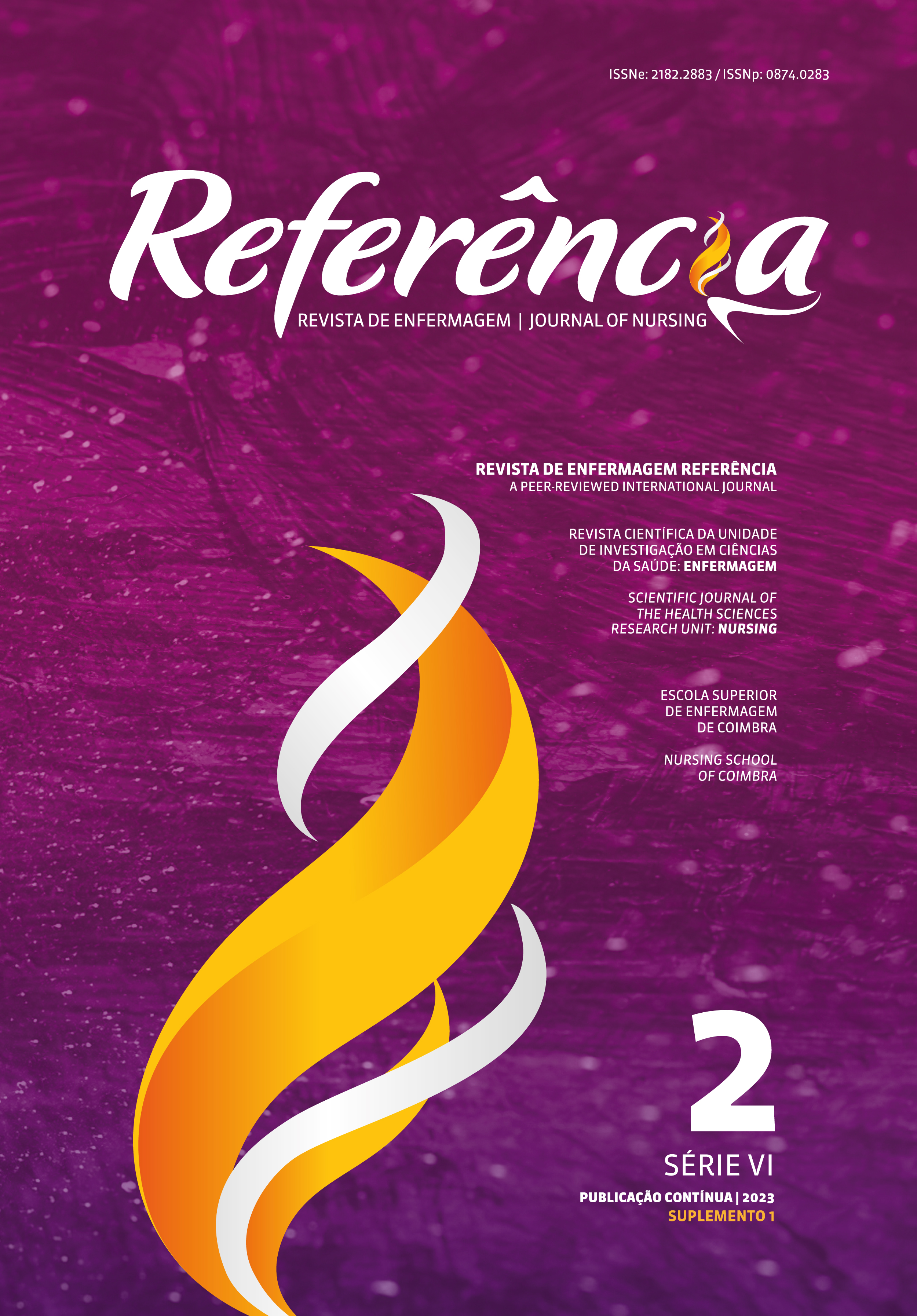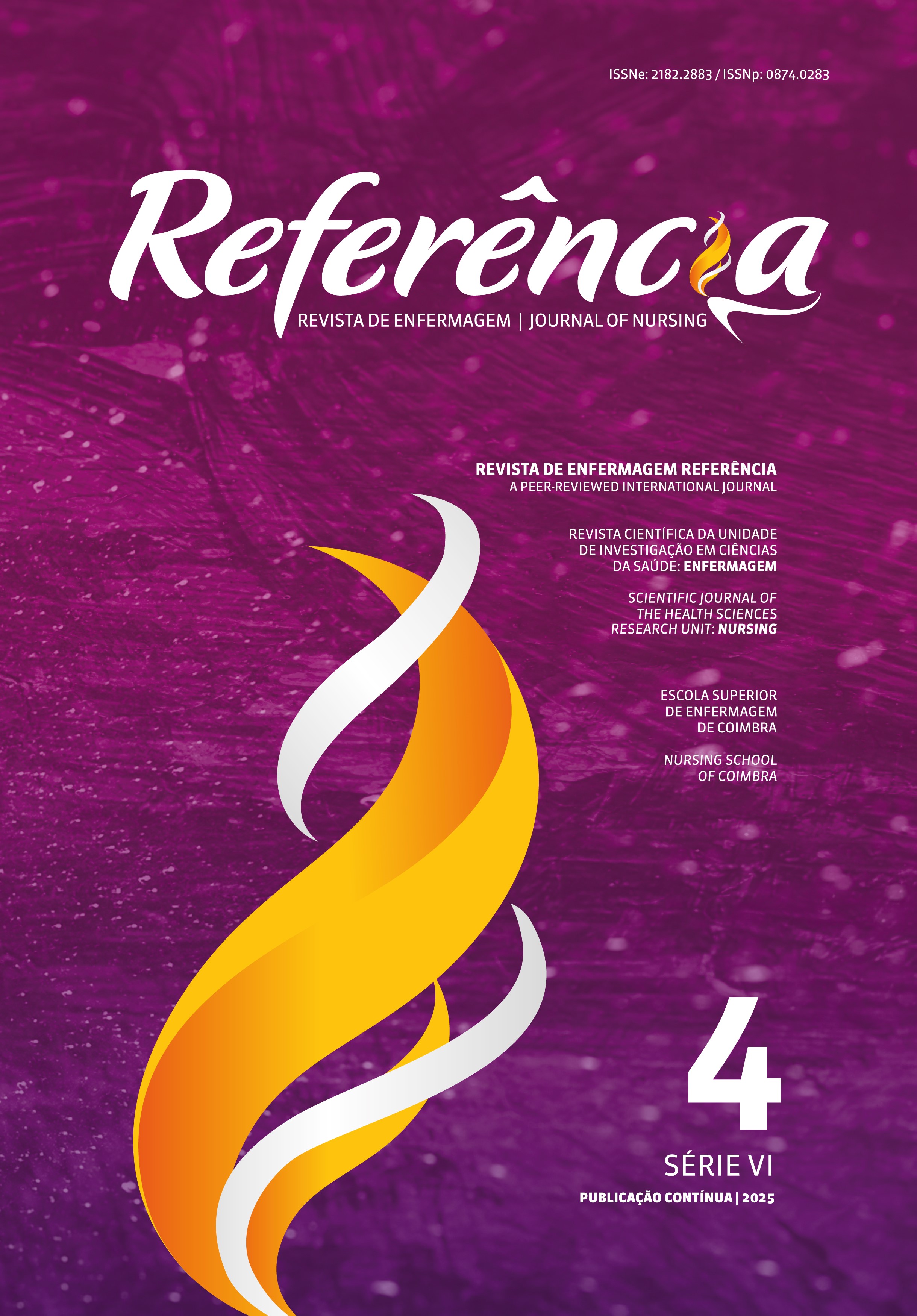Cuidadores familiares de pessoas com demência: Tradução, adaptação e validação da Escala de Limites Ambíguos
DOI:
https://doi.org/10.12707/RVI22035Palavras-chave:
luto, pessoa idosa, demência, cuidador familiarResumo
Enquadramento: Cuidar de pessoas com demência (PcD) é gerador de stresse entre cuidadores familiares (CF). Uma das situações geradoras desse stresse é a perda ambígua (PA).
Objetivos: Traduzir, adaptar e validar a Escala de Limites Ambíguos (ELA) para português europeu e determinar as caraterísticas psicométricas da ELA.
Metodologia: Estudo metodológico a partir de uma amostra de 88 CF de PcD. A consistência interna (CI) avaliada com o Coeficiente de Ômega de McDonald (ω), a validade de constructo através da análise fatorial exploratória (AFE) e a validade de critério com a Escala de Perceção de Stresse (EPS).
Resultados: A ELA apresentou validade conteúdo excelente. A AFE determinou um modelo de dois fatores, explicando 44% da variância, ω de 0,72. Os CF que residem com a PcD apresentam maior PA (t = 2,823, p < 0,01). Correlação significativa positiva e moderada entre a ELA e a EPS (rs = 0,578, p < 0,01).
Conclusão: A ELA é um instrumento com propriedade psicométrica de CI e validade aceitáveis para a avaliação da PA.
Downloads
Referências
Alzheimer Europe. (2019). Dementia in Europe Yearbook 2019: Estimating the prevalence of dementia in Europe. https://www.alzheimer-europe.org/Publications/Dementia-in-Europe-Yearbooks
Boateng, G. O., Neilands, T. B., Frongillo, E. A., Melgar-Quiñonez, H. R., & Young, S. L. (2018). Best practices for developing and validating scales for health, social, and behavioral research: A primer. Frontiers in Public Health, 6. https://doi.org/10.3389/fpubh.2018.00149
Boss, P. (2007). Ambiguous loss theory: Challenges for scholars and practitioners. Family Relations, 56(2), 105–111. https://doi.org/10.1111/j.1741-3729.2007.00444.x
Boss, P. (2016). The context and process of theory development: The story of ambiguous loss. Journal of Family Theory & Review, 8(3), 269–286. https://doi.org/10.1111/jftr.12152
Boss, P., Bryant, C. M., & Mancini, J. A. (2017). Ambiguous Loss: A Major Stressor. In P. Boss, C. M. Brayand & J. A. Mancini (Eds.), Family stress management: A contextual approach (3ª ed., pp. 71-85). SAGE.
Boss, P., Greenberg, J. R., & Pearce-McCall, D. (1990). Measurement of boundary ambiguity in families. University of Minnesota.
Cohen, S., Kamarck, T., & Mermelstein, R. (1983). A global measure of perceived stress. Journal of Health and Social Behavior, 24(4),385. https://doi.org/10.2307/2136404
Davidson, M. (2014). Known-groups validity. In A. C. Michalos (Ed.), Encyclopedia of quality of life and well-being research (pp.3481–3482). Springer Netherlands. https://doi.org/10.1007/978-94-007-0753-5_1581
Hair, J. F., Black, W. C., Babin, B. J., & Anderson, R. E. (2019). Multivariate data analysis (8th ed.). Cengage. Katz, M. H. (2011). Multivariable analysis (3rd ed.). Cambridge University Press. https://doi.org/10.1017/CBO9780511974175
Malhotra, N. K. (2019). Pesquisa de marketing: Uma orientação aplicada (7th ed.). Bookman
Organization for Economic Co-operation and Development. (2019). Health at a glance 2019 OECD indicators. https://doi.org/10.1787/e88a7402-en
Pais Ribeiro, J., & Marques, T. (2009). A avaliação do stresse: A propósito de um estudo de adaptação da escala de percepção de stresse. Psicologia, Saúde & Doenças, 10(2), 237–248. https://www.redalyc.org/pdf/362/36218589008.pdf
Smodic, S., Forst, E., Rauschenberger, J., & McCoy, M. (2019). Financial planning with ambiguous loss from Alzheimer’s disease: Implications, applications, and interventions. Journal of Financial Planning, 32(8), 34–45. https://www.financialplanningassociationorg/sites/default/files/2021-10/AUG19%20JFP%20Smodie%20PDF.pdf
Thomas, P., Clement, J., Hazif-Thomas, C., & Leger, J. (2001). Family, Alzheimer’s disease and negative symptoms. International Journal of Geriatric Psychiatry, 16(2), 192–202. https://doi.org/10.1002/1099-1166(200102)16:2<192::aidgps301>3.0.co;2-y
Viladrich, C., Angulo-Brunet, A., & Doval, E. (2017). Un viaje al rededor de alfa y omega para estimar la fiabilidad de consistencia interna. Anales de Psicología, 33(3), 755. https://doi.org/10.6018/ analesps.33.3.268401
van Wijngaarden, E., Wedden, H., Henning, Z., Komen, R., & The, A.-M. (2018). Entangled in uncertainty: The experience of living with dementia from the perspective of family caregivers. PLOS ONE, 13(6), e0198034. https://doi.org/10.1371/journal.pone.0198034
Wild, D., Alyson, G., Mona, M., Sonya, E., Sandra, M., Verjee-Lorenz, A., Erikson, P., Grove, A., Martin, M., Eremenco, S., McElroy, S., Verjee-Lorenz, A., & Erikson, P. (2005). Principles of good practice for the translation and cultural adaptation process for patient-reported outcomes (PRO) measures: Report of the ISPOR task force for translation and cultural adaptation. Value Health, 8(2), 94–104. https://doi.org/10.1111/j.1524-4733.2005.04054.x
World Health Organization. (2021). Dementia. https://www.who.int/news-room/fact-sheets/detail/dementia
Yusoff, M. S. (2019). ABC of content validation and content validity index calculation. Education in Medicine Journal, 11(2), 49–54. https://doi.org/10.21315/eimj2019.11.2.6






















